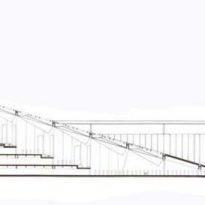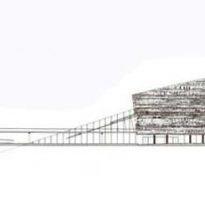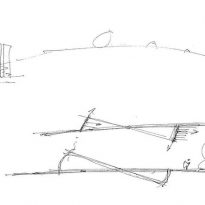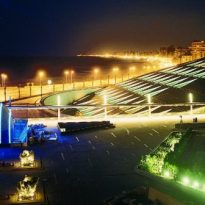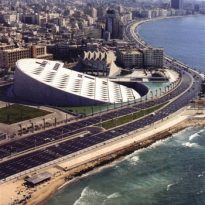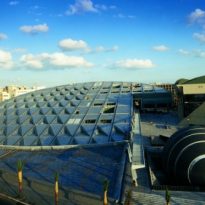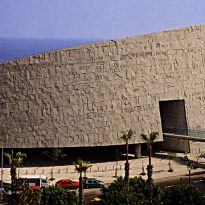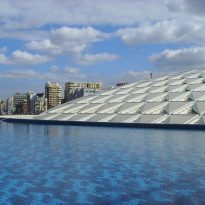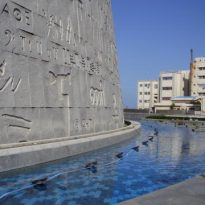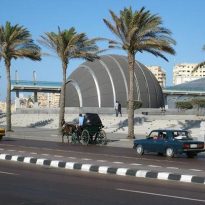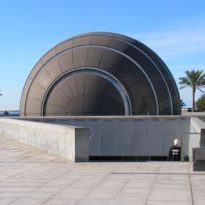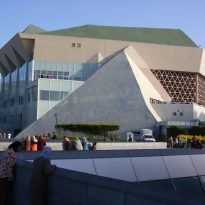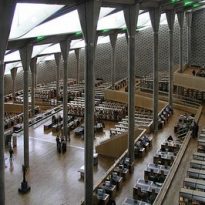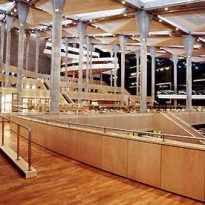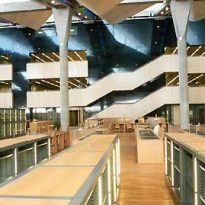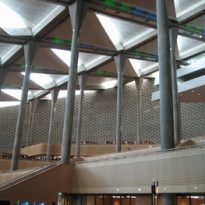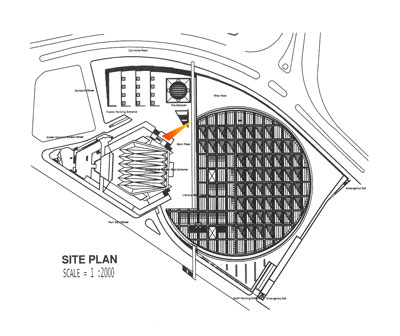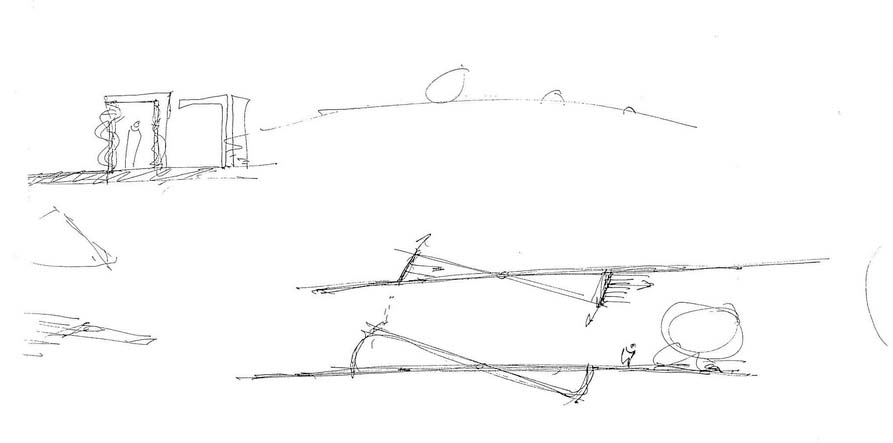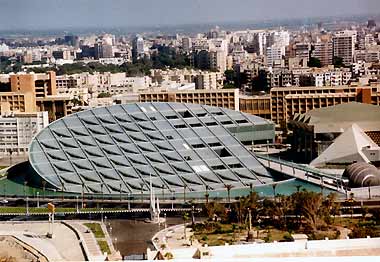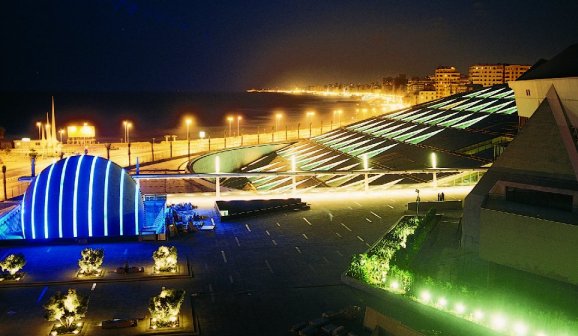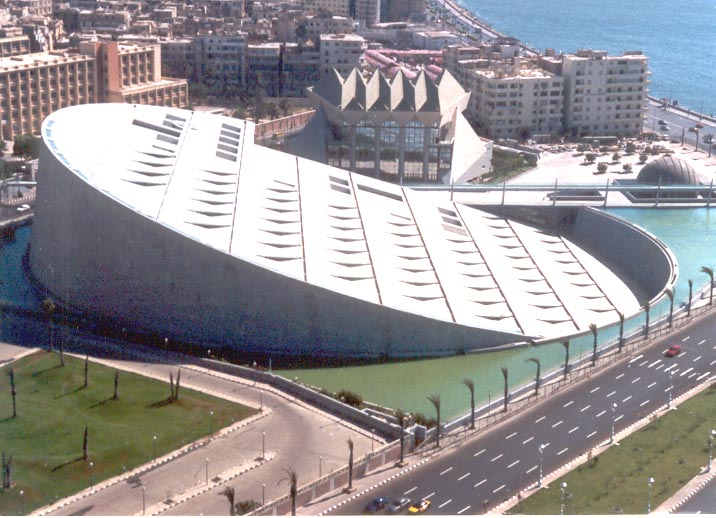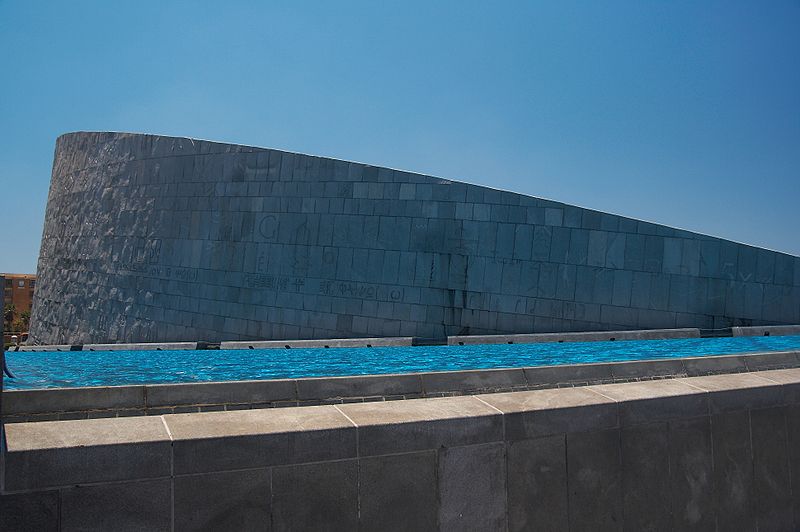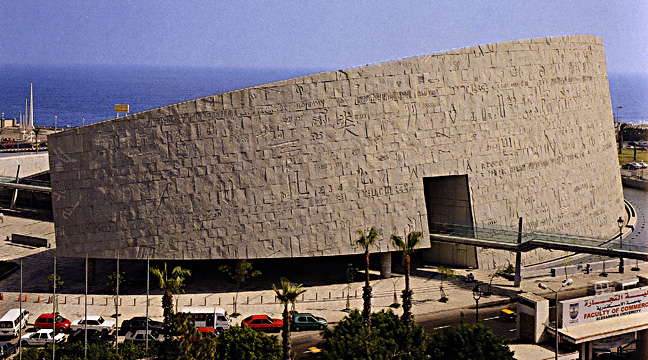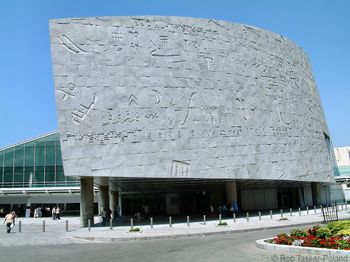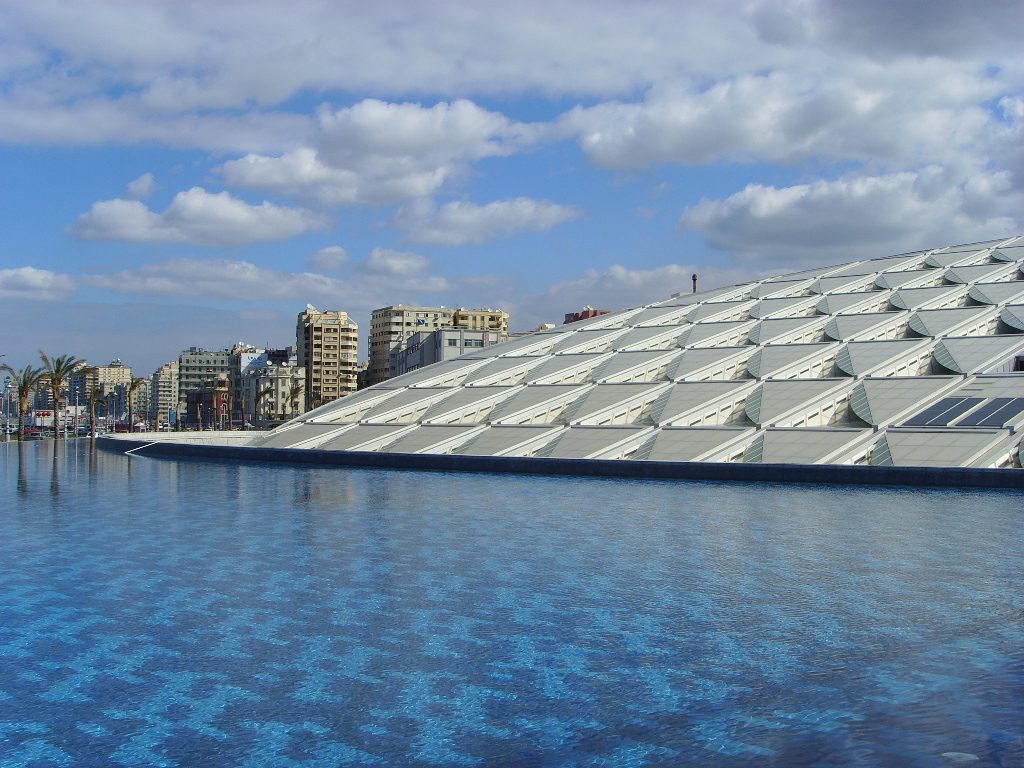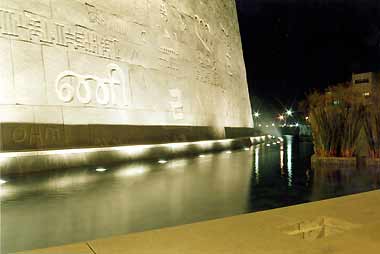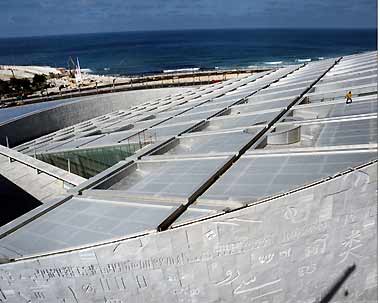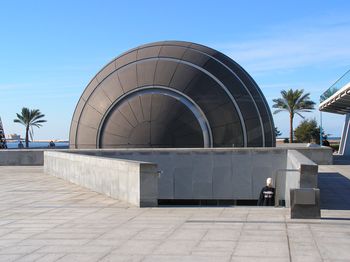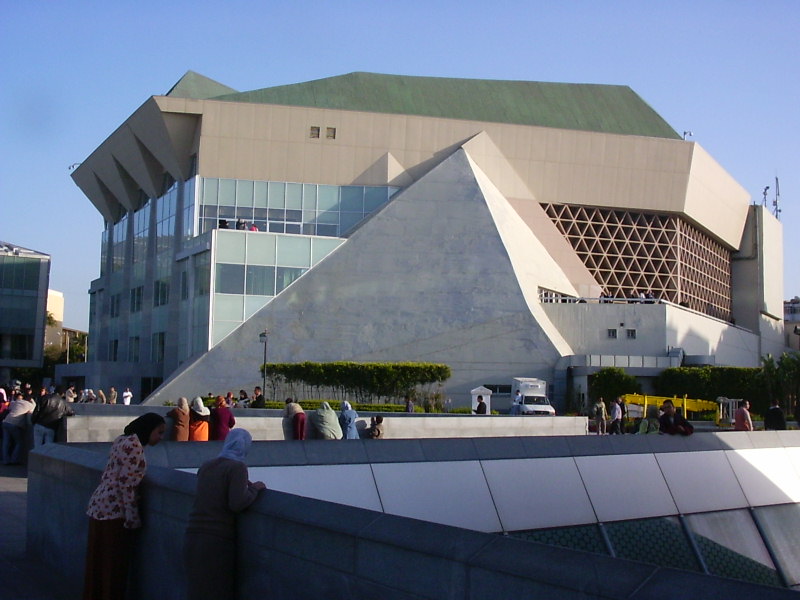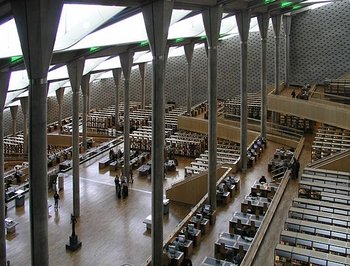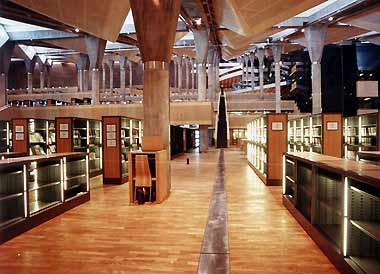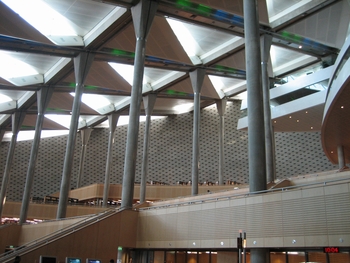Library of Alexandria

Introduction
The Library of Alexandrina is a major library and cultural center, built in commemoration of the largest library of antiquity.
In 1987 came out an ambitious cultural project: building a new library in the city of Alexandria to recover and an enclave mythical antiquity, a World Heritage Site.
The aim was the same goal that I had in antiquity: to act as a public research library and support the people of the Arab world and the Middle East to retain its old position as academics and researchers in different fields of science.
To accomplish this, in 1988 UNESCO sponsored an international competition where the project was ganadoró Norwegian firm Snøhetta. The budget for construction was $ 230 million, financed by countries around the world. The building was officially opened on October 17, 2002 in the same location it was in antiquity, 1,600 years after the disappearance of those large collections of knowledge.
Dependents of the Library have also built two other buildings, one dedicated to the Conference Center and the other to Planetarium which consists of three museums: the Science, the Calligraphy and Archaeology. There is also a restoration laboratory, a library for the blind and handicapped children and a modern printing.
The building can house 20 million books. It currently has about 200,000 copies, most of which were purchased by donations. There are 50,000 maps, 10,000 manuscripts, 50,000 rare books and also copies of the modern world, with 10,000 multimedia files and 50,000 audio visual.
Today, the library receives about 800,000 visitors each year.
The building was designed to last for two centuries, but it is feared that this period may be overstated, due to its proximity to the sea.
History
The Old Library was part of an institution called the Serapeum, which included a Temple of Serapis cult, Soler founded by Ptolemy, king of Egypt between 305 and 285 BC after the death of Alexander the Great, came to house up to 700,000 volumes.
Both the Library and the Museum were among the most prestigious institutions of the ancient world. The librarian and museum director were appointed by the king of Egypt. This was the first public library government in history. There are many libraries in the times of the lighthouse but were exclusive to the priests of the temples and the royal family. He also had great religious and acted as a center for science and culture for many centuries. Great scientists like Archimedes, studied there.
It is unclear exactly when the ancient library of Alexandria was destroyed, we know that was burned several times. In the second century BC, during the reign of Ptolemy II Euergates, began the process of decline that continued through several centuries. In 47 B.C. losses multiplied with a first major fire decreed by Julius Caesar. In the year 273, with the fighting in times of Aureliano, suffered the worst damage in its history when the city razed the neighborhood of the palace became a wasteland. A new fire in 391 devoured almost the entire building. In 634 the Caliph Omar started a fire because, for this, the books of the Library contradicted the Quran, and therefore were dangerous.
Status
Located on the coast of the Mediterranean Sea in the Egyptian city of Alexandria.
The Old Library and Museum were located in Los Palacios, a residential district occupying almost a third of the main city area.
The new building was constructed along the boardwalk, in the Shatby beachfront Al selsela, a few feet from where he was supposed to the old library.
It is implemented on the coast, across the coastal avenue. The building was surrounded by a pool of water that gives continuity to the sea.
Concept
On the outside, the building recalls the famous lighthouse of Alexandria, as its cover let glazed interior lighting project into the Mediterranean. Its implementation, surrounded by water, reinforces the concept.
The design of the cover is cylindrical, in tribute to the Egyptian god Ra, the sun god Seen from above, we propose the image of the sun as Egyptian hieroglyphics show the sun usually as a single disc.
It sought to recover the original spirit of the Library of Alexandria as a center of learning, dialogue and rationality.
Spaces
The building is a huge cylinder with sloping roof, of 36,770 meters square and 33 meters high. It consists of 11 levels, four of which are below the street level.
The cylinder diameter of 160 meters, passing from 15.8 meters to 37 meters above the ground with its sloping roof.
The glass roof gives sunlight to optimum levels throughout the year while working as a link that allows visual access to the outside and vice versa. Solar sails, installed on the roof allows access diffuse sunlight into the interior space.
A great wall takes the maximum height of the cylinder. This contains calligraphic carvings in 120 languages, representing the world’s civilizations.
A moat surrounding the major part of the building, acting as border of the library.
Inside, terraces are covering different levels, with an observation deck on each level allowing unobstructed visibility to any destination.
Shelving extend behind each terrace, which can be accessed independently through an external corridor, providing superior flexibility for the organization of each department.
Provides a single hypostyle (Egyptian hall supported by columns) of concrete and wood, located in the center of the building, designed for reading.
The spectacular Hall covers 70,000 m² in 11 cascading levels and can accommodate 2,000 readers. It also has 200 rooms for academic study and research.
The Rare Book and Manuscript Exhibition Gallery is located in the heart of the library, which occupies the space of 344m2. About 120 manuscripts and rare books are displayed in these cases.
Two pieces of kiswa (black brocade decorative cover, embroidered in gold with verses from the Koran) of the Holy Kaaba adorn the walls above Islamic manuscripts.
The Antiquities Museum displays artifacts discovered at the construction site of the modern library.
The collection consists of nearly 1,100 pieces and documents from various periods of Egyptian civilization dating from Pharaonic times to the Islamic period, including the Greek civilization that came with the conquest of Alexander the Great and Roman civilizations and Coptic.
Other exhibits in the collection include “Impressions of Alexandria”, a collection of engravings, lithographs, photographs and maps of early artists and Alexandria by travelers ages 15 to 19, and a permanent exhibition dedicated to literary, cinematic and paintings of famous Egyptian director, production designer and filmmaker Shadi Abdel Salam.
The project includes three main buildings: the library, a conference center and an area of 18 meters, which is the planetarium. A special museum for underwater monuments discovered in the eastern port is located at the Planetarium.
The conference center and library, though independent, share some facilities, next to the Plaza de la Cultura.
Structure
The cover is made of glass with metal structure.
Slender fluted concrete columns, support the roof, designed without movement joints in its 16,000 square meters.
Materials
The large outer curved wall was built with granite from Aswan.
Inside, the rooms are of wood. The floors are oak.





